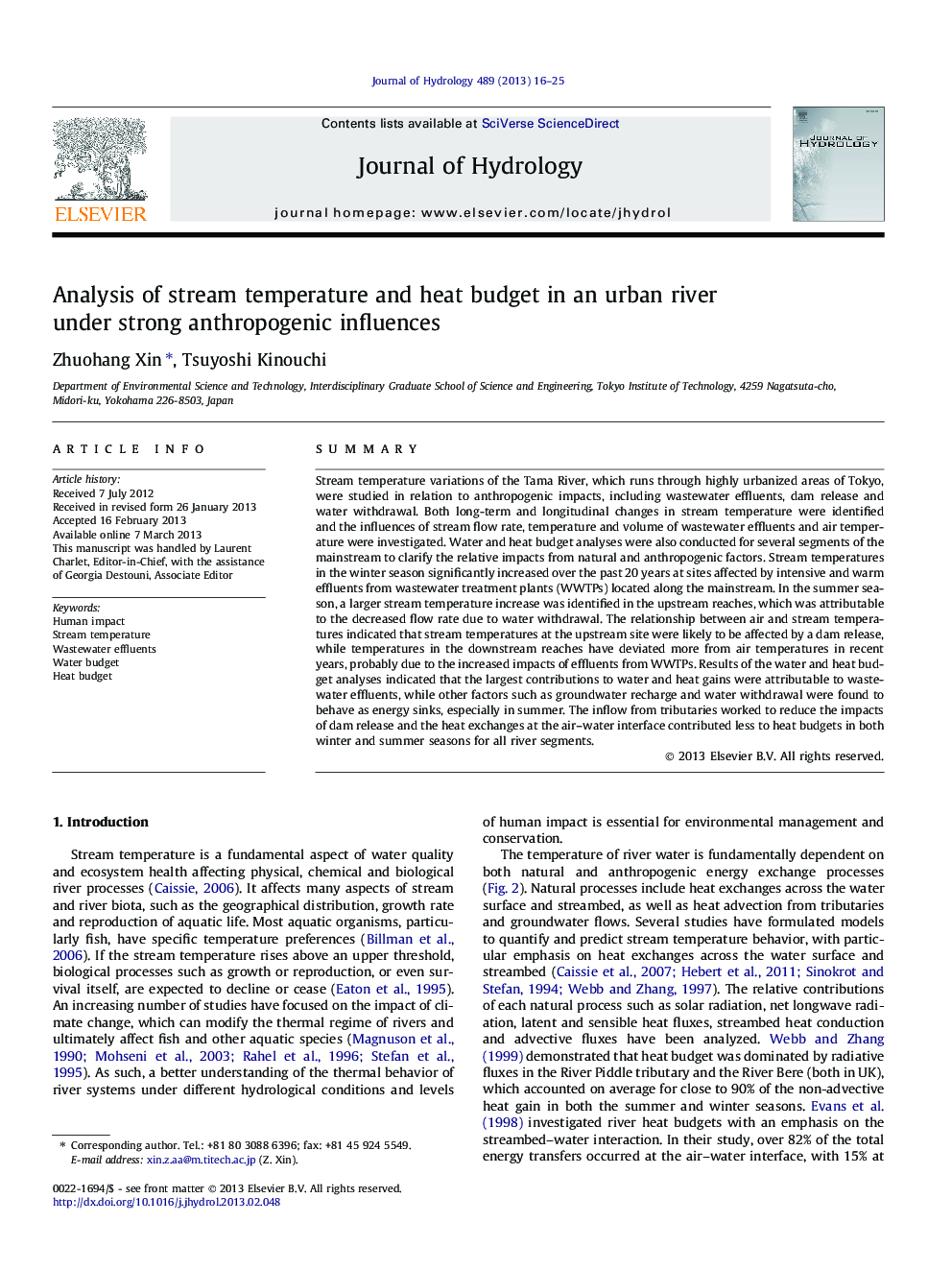| کد مقاله | کد نشریه | سال انتشار | مقاله انگلیسی | نسخه تمام متن |
|---|---|---|---|---|
| 4576319 | 1629959 | 2013 | 10 صفحه PDF | دانلود رایگان |

• We studied stream temperature variations in relation to anthropogenic impacts.
• Stream temperature significantly increased in winter season over the past 20 years.
• Wastewater effluents greatly affected water and heat budgets and stream temperature.
• Groundwater recharge contributed to the heat loss, especially in summer.
• The impact of dam release was limited because of the tributary inflows.
SummaryStream temperature variations of the Tama River, which runs through highly urbanized areas of Tokyo, were studied in relation to anthropogenic impacts, including wastewater effluents, dam release and water withdrawal. Both long-term and longitudinal changes in stream temperature were identified and the influences of stream flow rate, temperature and volume of wastewater effluents and air temperature were investigated. Water and heat budget analyses were also conducted for several segments of the mainstream to clarify the relative impacts from natural and anthropogenic factors. Stream temperatures in the winter season significantly increased over the past 20 years at sites affected by intensive and warm effluents from wastewater treatment plants (WWTPs) located along the mainstream. In the summer season, a larger stream temperature increase was identified in the upstream reaches, which was attributable to the decreased flow rate due to water withdrawal. The relationship between air and stream temperatures indicated that stream temperatures at the upstream site were likely to be affected by a dam release, while temperatures in the downstream reaches have deviated more from air temperatures in recent years, probably due to the increased impacts of effluents from WWTPs. Results of the water and heat budget analyses indicated that the largest contributions to water and heat gains were attributable to wastewater effluents, while other factors such as groundwater recharge and water withdrawal were found to behave as energy sinks, especially in summer. The inflow from tributaries worked to reduce the impacts of dam release and the heat exchanges at the air–water interface contributed less to heat budgets in both winter and summer seasons for all river segments.
Journal: Journal of Hydrology - Volume 489, 10 May 2013, Pages 16–25